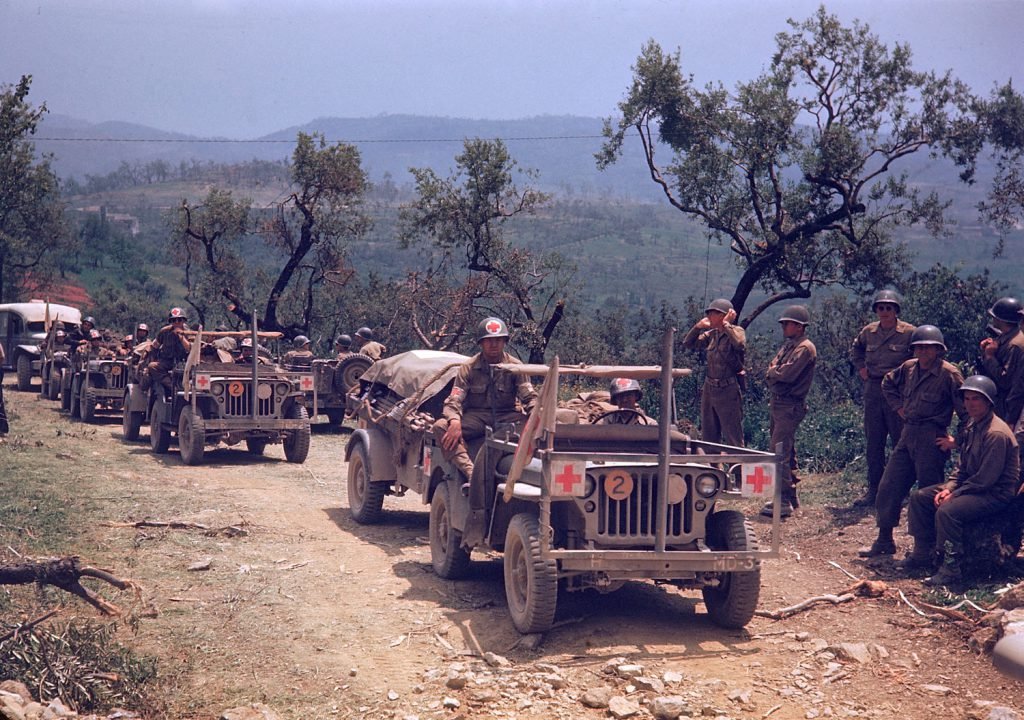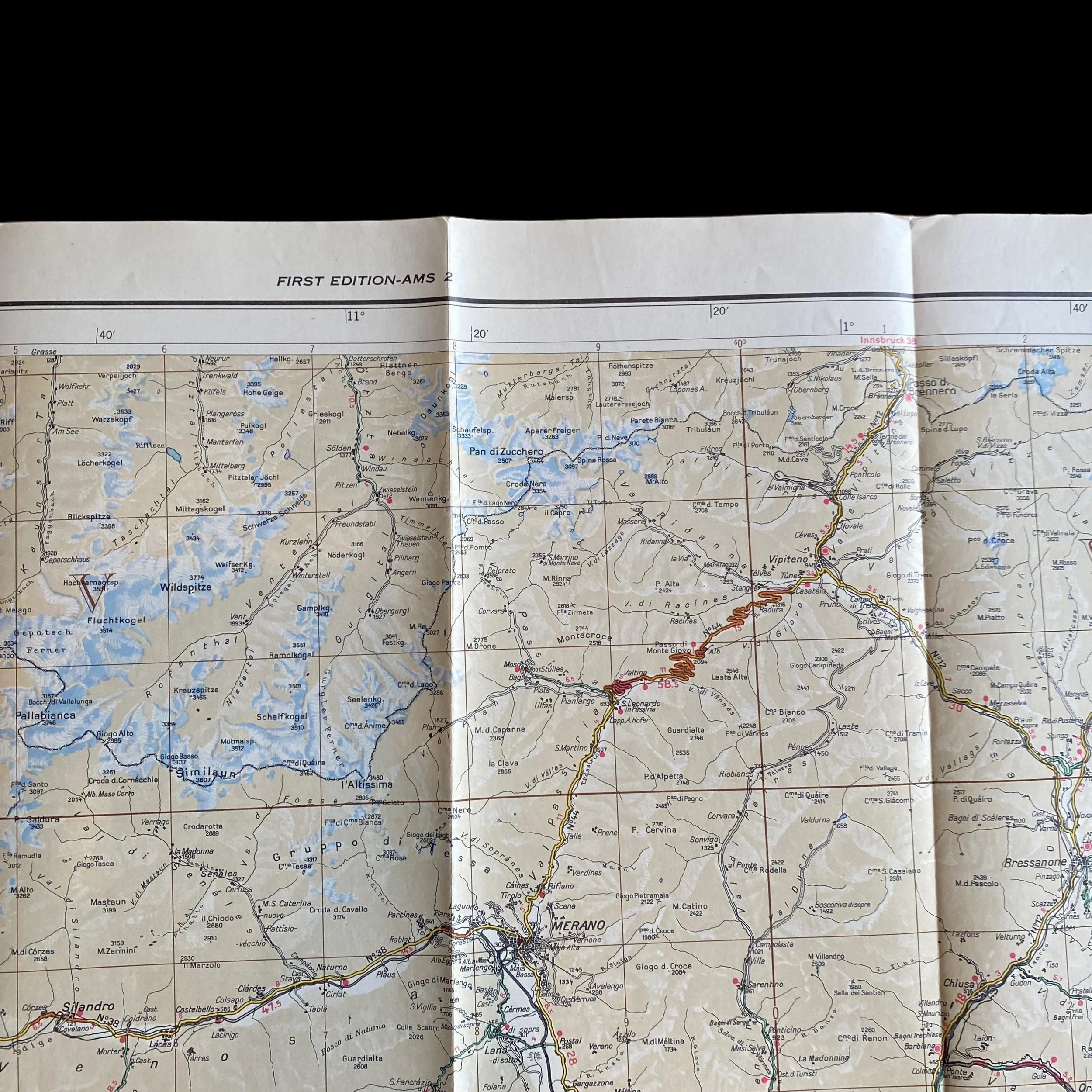WWII 1943 "FIRST EDITION" Bolzano Italy Allied Infantry and Armored Divisions Italian Theater Campaign Combat Map









































WWII 1943 "FIRST EDITION" Bolzano Italy Allied Infantry and Armored Divisions Italian Theater Campaign Combat Map
Comes with C.O.A.
This original and rare museum-grade World War II Italian Theater Campaign 1943 dated combat map is a rare FIRST EDITION used by Allied Infantry and Armored Divisions during Allied operations in Italy. The Allied invasion of Italy was the Allied amphibious landing on mainland Italy that took place from 3 September 1943, during the Italian campaign of World War II. The operation was undertaken by General Sir Harold Alexander's 15th Army Group (comprising General Mark W. Clark's American Fifth Army and General Bernard Montgomery's British Eighth Army) and followed the successful Allied invasion of Sicily. The main invasion force landed on the west coast of Italy at Salerno on September 9 as part of Operation Avalanche, while two supporting operations took place in Calabria (Operation Baytown) and Taranto (Operation Slapstick).
The U.S. and Allied Advance into Italy during WWII: Operations in Bolzano, Merano, Bressanone, and Silandro
The Italian Campaign of World War II stands as a testament to the complexities and challenges faced by the Allies in their quest to defeat Axis forces. Among the pivotal moments of this campaign was the advance into Northern Italy, which saw significant engagements around cities like Bolzano, Merano, Bressanone, and Silandro.
Strategic Importance of Northern Italy
The Allied advance into Northern Italy was a critical phase of the Italian Campaign. By targeting this region, the Allies aimed to achieve several strategic objectives. Firstly, Northern Italy served as a gateway to the heartland of Germany and Austria, providing access to key industrial centers and transportation networks. Additionally, control over Northern Italy would effectively sever Axis supply lines and disrupt their ability to reinforce their forces in other theaters of the war.
U.S. and Allied Operations
Bolzano, Merano, Bressanone, and Silandro were among the key objectives for the Allies as they pushed northward. These cities, nestled amidst the picturesque but treacherous terrain of the Italian Alps, presented formidable challenges to Allied forces. The mountainous terrain, coupled with well-entrenched German defenses, necessitated careful planning and execution of operations.
One of the notable engagements during this phase was the Battle of Bolzano. Bolzano, situated in the South Tyrol region, held strategic importance due to its transportation links and industrial infrastructure. The U.S. Fifth Army, under the command of General Mark Clark, spearheaded the assault on Bolzano in April 1945. Despite fierce resistance from German forces, the Allies managed to capture the city after intense urban combat.
Merano, located to the northwest of Bolzano, was another key objective. Its capture would further consolidate Allied control over the region. The Allied advance into Merano involved coordinated efforts between infantry, armor, and air support to overcome German defenses and secure the city.
Bressanone and Silandro, situated in the vicinity of Bolzano, were also subjected to Allied offensives. These operations involved a combination of maneuver warfare and attrition tactics aimed at gradually wearing down German resistance and gaining territorial control.
Use of Maps in Combat
The rugged terrain of Northern Italy posed significant navigational challenges for Allied forces. In such environments, maps emerged as indispensable tools for infantry and armored units alike. Detailed topographic maps provided essential information about the terrain, including elevation, vegetation, and natural obstacles.
Infantry units relied on maps to plan routes, identify enemy positions, and navigate through difficult terrain features such as valleys, ridges, and gullies. For armored units, maps played a crucial role in determining suitable routes of advance, identifying potential ambush sites, and coordinating with infantry support.
Moreover, maps facilitated effective command and control by enabling unit commanders to visualize the battlefield and make informed decisions in real-time. By overlaying tactical information onto maps, commanders could coordinate the movements of multiple units, adjust fire support, and respond swiftly to changing battlefield conditions.
In the context of operations around cities like Bolzano, Merano, Bressanone, and Silandro, maps helped Allied forces plan urban assaults, identify key objectives, and navigate through narrow streets and alleyways. Additionally, maps facilitated intelligence gathering by marking strategic points of interest, such as enemy strongholds, defensive positions, and potential avenues of approach.
The U.S. and Allied advance into Northern Italy during World War II represented a pivotal phase of the Italian Campaign. Operations around cities like Bolzano, Merano, Bressanone, and Silandro showcased the tenacity and determination of Allied forces in overcoming formidable obstacles to achieve their objectives. The use of maps played a crucial role in guiding infantry and armored units through the rugged Italian terrain, enabling them to navigate complex landscapes and coordinate effective military actions. Ultimately, the successful capture of Northern Italy contributed significantly to the overall Allied victory in Europe and hastened the downfall of the Axis powers.